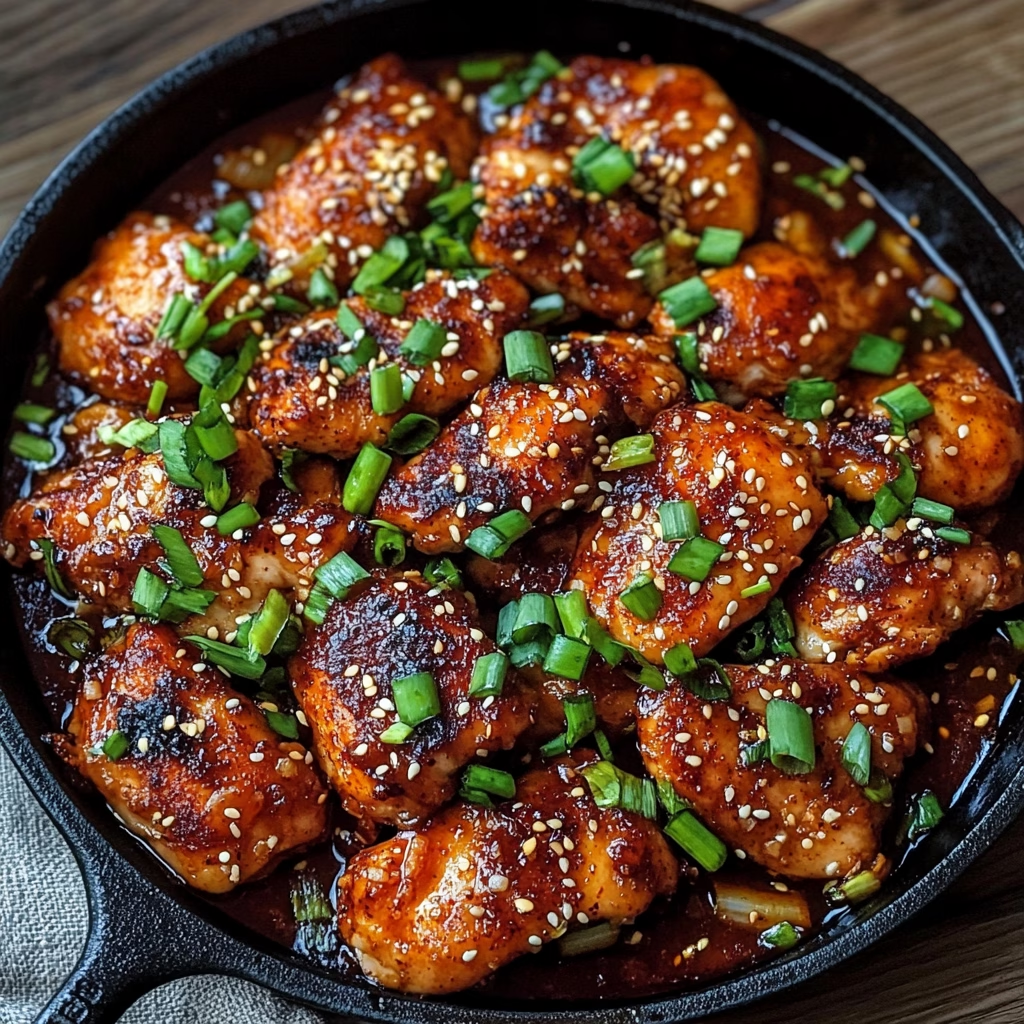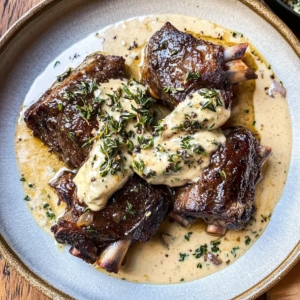Ah, Korean Spicy Gochujang Chicken! Let me tell you, this dish has won a special place in my heart (and stomach) ever since I first tried it at a little Korean restaurant tucked away in my neighborhood. The moment I took that first bite, I was hooked! The savory heat of the gochujang paired with the succulent chicken sent my taste buds into a delightful frenzy. I swear I could taste a little bit of love in every mouthful. It’s a meal that perfectly combines bold flavors and easy prep, making it a go-to dinner for both busy weeknights and special occasions when I want to impress my friends.
Whether you’re a spice enthusiast or just looking for a fun twist on chicken, this recipe is sure to spice up your dinner routine. Plus, the vibrant color of the dish is just begging to be photographed—trust me, your Instagram friends will thank you later! So, let’s roll up our sleeves and get started!
What’s in Korean Spicy Gochujang Chicken?
Boneless, skinless chicken thighs: They’re juicy and tender, perfect for soaking up the delicious sauce. Feel free to use chicken breasts if you prefer, but I find thighs give the best flavor and texture.
Salt and pepper: The simplest seasoning makes the chicken pop and keeps it tasty. Don’t skip it!
Vegetable oil: This is used for cooking the chicken until it’s crispy and golden. I usually opt for canola or sunflower oil for their high smoke points.
Gochujang: The star of the show! This Korean red chili paste brings a perfect blend of heat and umami. It’s easy to find at Asian markets or even in the international aisle of your grocery store.
Soy sauce: A must for that savory depth of flavor.
Honey or brown sugar: I love using honey for its natural sweetness and for balancing the heat from the gochujang, but brown sugar works just as well!
Rice vinegar: This adds a lovely tang. If you don’t have rice vinegar, apple cider vinegar can be a good substitute.
Garlic and ginger: Freshly minced garlic and grated ginger bring so much aroma and flavor to the dish—perfect companions for the chicken!
Sesame oil: A little drizzle of this fragrant oil brings everything together beautifully.
Sesame seeds and green onions: These are the finishing touches that add a lovely crunch and fresh flavor. Plus, they look gorgeous on the plate!
Is Korean Spicy Gochujang Chicken Good for You?
Now let’s talk about the health benefits! This dish is packed with protein from the chicken, making it a fantastic option for muscle repair and energy. Plus, the spices and ingredients like garlic and ginger have their own health perks. For instance, ginger can help with digestion and has anti-inflammatory properties, while garlic is known to have heart-health benefits.
That said, it’s important to keep portion sizes in mind, especially with the gochujang which can be high in sodium. I suggest pairing it with a side of steamed rice or vegetables for a well-rounded meal. Remember, moderation is key, even with delicious food like this!
Ingredients for Korean Spicy Gochujang Chicken (Serves 4)
– 4 boneless, skinless chicken thighs
– Salt and pepper to taste
– 2 tablespoons vegetable oil
– 3 tablespoons gochujang (Korean red chili paste)
– 2 tablespoons soy sauce
– 2 tablespoons honey or brown sugar
– 1 tablespoon rice vinegar
– 2 cloves garlic, minced
– 1 teaspoon grated ginger
– 1 teaspoon sesame oil
– 1 tablespoon sesame seeds (for garnish)
– 2 green onions, finely sliced (for garnish)
How to Make Korean Spicy Gochujang Chicken?
1. First, season the chicken thighs generously with salt and pepper on both sides. Let them marinate for just a few minutes—trust me, this makes a difference!
2. In a large skillet, heat the vegetable oil over medium-high heat. When it’s nice and hot, carefully place the chicken thighs in the skillet, skin-side down. Allow them to cook for about 5-7 minutes until they’re beautifully golden brown. Then flip and let them cook for another 5 minutes.
3. While our chicken is sizzling away, let’s whip up the sauce! In a bowl, combine the gochujang, soy sauce, honey (or brown sugar), rice vinegar, minced garlic, grated ginger, and sesame oil. Mix until all the ingredients are well integrated and set aside.
4. Pour that luscious sauce right over the chicken thighs in the skillet. Lower the heat to medium and cover it with a lid. Let it simmer for about 10 more minutes, or until the chicken is fully cooked (aim for an internal temperature of 165°F/75°C).
5. Once the chicken is cooked through, take off the lid and bump the heat up just a little. This will help thicken the sauce for about 2-3 minutes, creating a glaze that clings to our chicken. Yum!
6. Remove the skillet from heat and transfer the chicken to a serving plate. Don’t forget to drizzle any remaining sauce over the top, because that’s the good stuff!
7. Finally, sprinkle on those gorgeous sesame seeds and sliced green onions for a pop of color. Now, it’s time to dig in! Serve with steamed rice or sautéed vegetables for a complete meal.
Serving Suggestions and Personal Tips
Okay, friends, here’s where I drop some wisdom! This dish is just as fabulous wrapped in a lettuce leaf as it is over rice. Feeling adventurous? You could even toss in some chopped veggies—carrots, bell peppers, or broccoli—into the skillet during the last few minutes of cooking for a one-pan wonder.
And don’t hesitate to adjust the spice level! Love the heat? Go for more gochujang. If you’re feeling a bit timid, start with a smaller amount and build from there.
So, there you have it! My heart is saying, “Make this tonight!” and my taste buds are on board! Please give Korean Spicy Gochujang Chicken a try and let me know how it turns out. I can’t wait to hear about your culinary adventures—let’s keep the conversation going!



